Garden Room Sliding Doors: A Complete Buyer’s Guide
Table of Contents
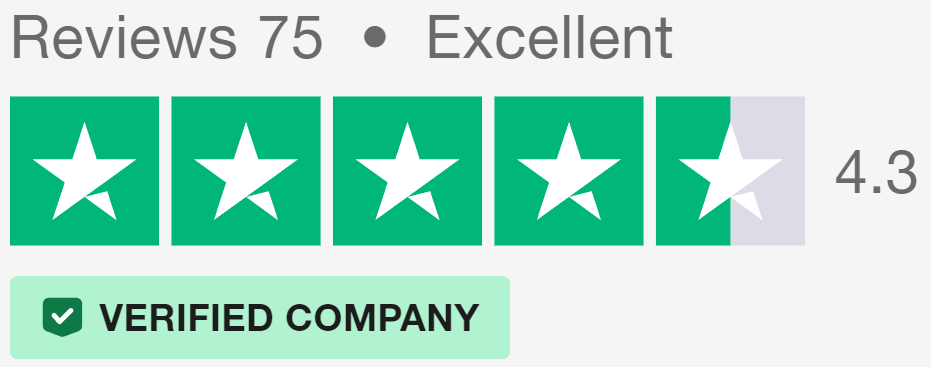
Modern garden rooms have quickly become a popular solution for creating additional living space. With more people working from home and pursuing hobbies that need dedicated space, these purpose-built structures offer flexibility without the cost and disruption of a house extension. Garden room sliding doors can help by bringing in natural light while providing easy access to the outdoor area.
Introduction to Garden Room Sliding Doors
Garden room sliding doors consist of large glass panels that move horizontally along tracks. Moving smoothly on rollers, these doors stack behind one another when opened, taking up minimal space compared to traditional hinged doors.
How Sliding Door Systems Work
The operating mechanism of sliding doors relies on a combination of rollers, tracks, and frames. Top-hung systems suspend the door panels from an overhead track, while bottom-rolling designs distribute the weight through the base track. Most garden office projects benefit from top-hung systems, as they prevent debris from blocking the track and require less maintenance.
Garden Room Uses and Requirements
Your outdoor living space needs change depending on its intended use. Home offices need good ventilation and natural light, while garden studios often require wider openings to move equipment in and out. Music rooms and hobby spaces might prioritise sound insulation, affecting the type of glazing needed.
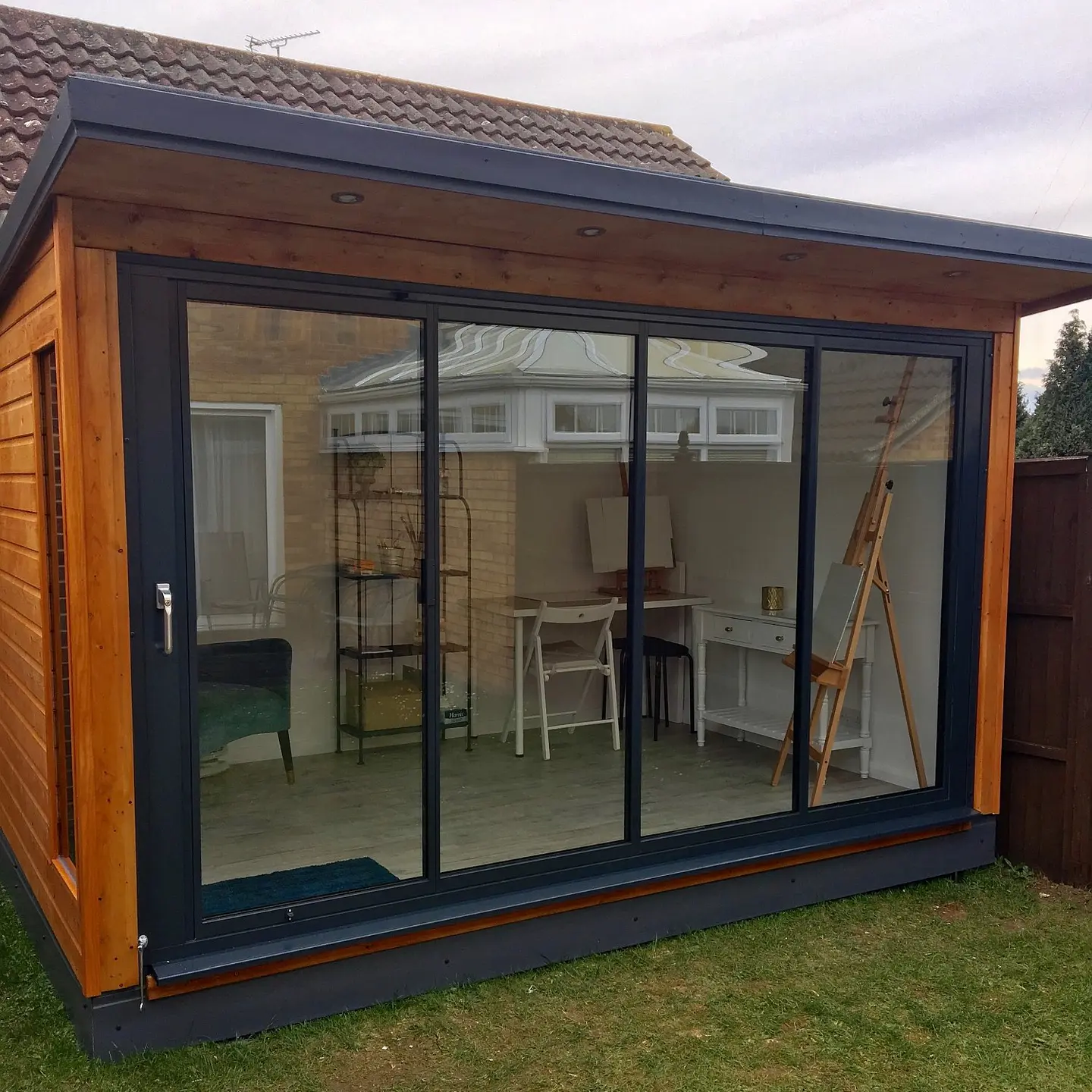
Benefits of Sliding Doors in Garden Room Design
Large glass panels in sliding doors bring natural light deep into your garden room without compromising on space. Unlike hinged doors that need clearance to swing open, sliding systems stack neatly against each other. This space-efficient design proves particularly valuable in smaller garden rooms where every centimetre counts.
The ability to partially open sliding doors offers precise control over ventilation and temperature. During summer months, you can adjust the opening to create airflow without fully exposing the interior, while in winter, the thermally efficient glazing helps maintain warmth without blocking views of your garden.
Beyond practical benefits, sliding doors create an open feeling in garden rooms. The large glazed areas reduce the visual barrier between the interior and exterior, making even modest-sized spaces feel more generous. This visual connection helps maintain focus during long work sessions and creates a pleasant environment for creative activities.
Designing Garden Room Sliding Doors
The appearance of garden room sliding doors affects both the inside and outside of your building. Strong visual lines created by door frames can become a striking feature, while minimal frames let the glass take centre stage. When planning garden office design, the proportions of your doors should match the overall scale of the building.
Size and Configuration Guidelines
Garden room doors need careful sizing to work well with your space. Narrow sliding doors suit smaller buildings, offering good light levels without overpowering the structure. For larger garden buildings, wider panels create an impressive visual statement while maintaining easy operation.
Floor to ceiling glazing changes how your garden room feels, making spaces appear taller and bringing in more natural light. The height of sliding doors affects both practical use and visual impact – taller doors create a more open feeling, but might need more robust frames to support the extra weight. Garden room sliding doors typically range from standard door height up to the full height of the building.
The width of each panel impacts both the practical operation and visual balance of your doors. Wider panels mean fewer frame lines but require more force to move, while narrower panels slide more easily but create more visible frame divisions. Sliding doors for garden rooms work best when panel widths stay between standard measurements that let them move smoothly while maintaining proper alignment.
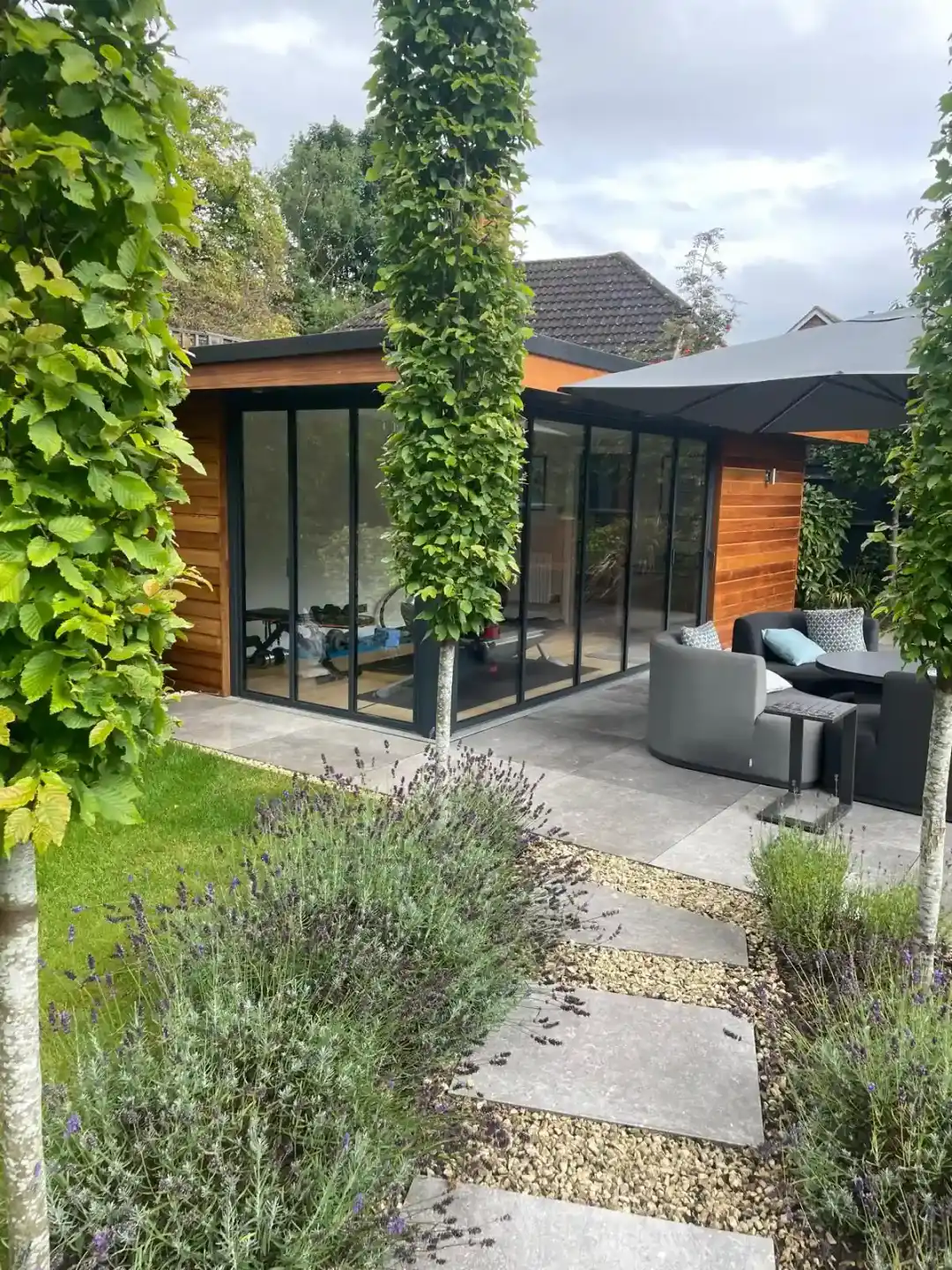
Materials and Finishes
Powder-coated aluminium doors offer excellent durability for garden rooms. The coating process creates a tough surface that resists scratches and fading, available in hundreds of RAL colours to match your building’s style. The strength of aluminium allows for slimmer frames than other materials, increasing glass area without compromising stability.
Frame thickness affects both appearance and performance. Thicker frames provide more structural support but create more visible lines, while slimmer profiles increase the glass area but might limit maximum panel sizes. Garden room sliding doors made from modern aluminium systems strike a good balance between strength and visual lightness.
Corners and joints need careful attention during design and installation. High-quality systems use precision-cut joins that fit together perfectly, while lower-quality options might show visible gaps or misalignments. The way frames connect at corners particularly affects both weather protection and appearance.
Glass and Glazing Options
A flush threshold creates a smooth walkway between inside and outside spaces. This detail proves particularly important for garden rooms used as studios or offices, where you might need to move equipment or furniture through the doors. The threshold design also affects how well the doors keep out rain and drafts.
Modern glazing technology offers various options for controlling heat and light. Solar control glass reduces heat gain in summer, while low-emissivity coatings help retain warmth in winter. Garden room sliding doors fitted with the right glass type can help maintain comfortable temperatures year-round while reducing energy costs.
Glass thickness affects both thermal and acoustic performance. Double glazed units with different glass thicknesses on each side reduce noise transmission better than identical panes. For garden rooms near busy areas or used for activities needing quiet, such as music practice or video calls, proper glass specification makes a real difference.
Frame Designs
The visual weight of door frames can influence your entire garden room’s appearance. Heavier frames might suit traditional or industrial-styled buildings, while minimal frames work well with modern designs.
Handle designs and locking mechanisms need to balance security with ease of use. Flush handles reduce projecting parts that might catch on clothing or furniture, while still providing a good grip for operation. The placement of locks and handles affects both security and everyday convenience.
Track systems come in various designs that affect both operation and appearance. Concealed tracks create cleaner lines but might need more frequent cleaning to prevent debris buildup. Exposed tracks might be more visible but often prove easier to maintain. The track design directly impacts how smoothly sliding doors for garden rooms operate over time.
Garden Room Sliding Doors for Different Uses
Modern garden buildings vary widely in their purpose, with each use bringing specific requirements for light, access, and security. Good door design helps spaces work better for their intended purpose. Large sliding glass doors create bright, pleasant spaces that people want to spend time in, while proper security features keep equipment and furnishings safe.
Home Office Solutions
Garden room sliding doors influence how productive and pleasant your workspace feels. Direct sunlight on computer screens causes glare, so north-facing doors often work best for office setups. Sliding doors for garden rooms used as offices need reliable security systems, as they often house valuable equipment.
The position of your desk relative to patio sliding doors affects both comfort and productivity. Placing screens perpendicular to doors reduces glare while maintaining views of garden spaces. Side panels or blinds help control light levels throughout the day without blocking the view completely.
Many home workers need to balance light and privacy. Tinted glass or switchable privacy glazing lets you control visibility while keeping natural light. Meeting clients in your garden office requires easy access and a professional appearance, making the door placement and operation particularly important.
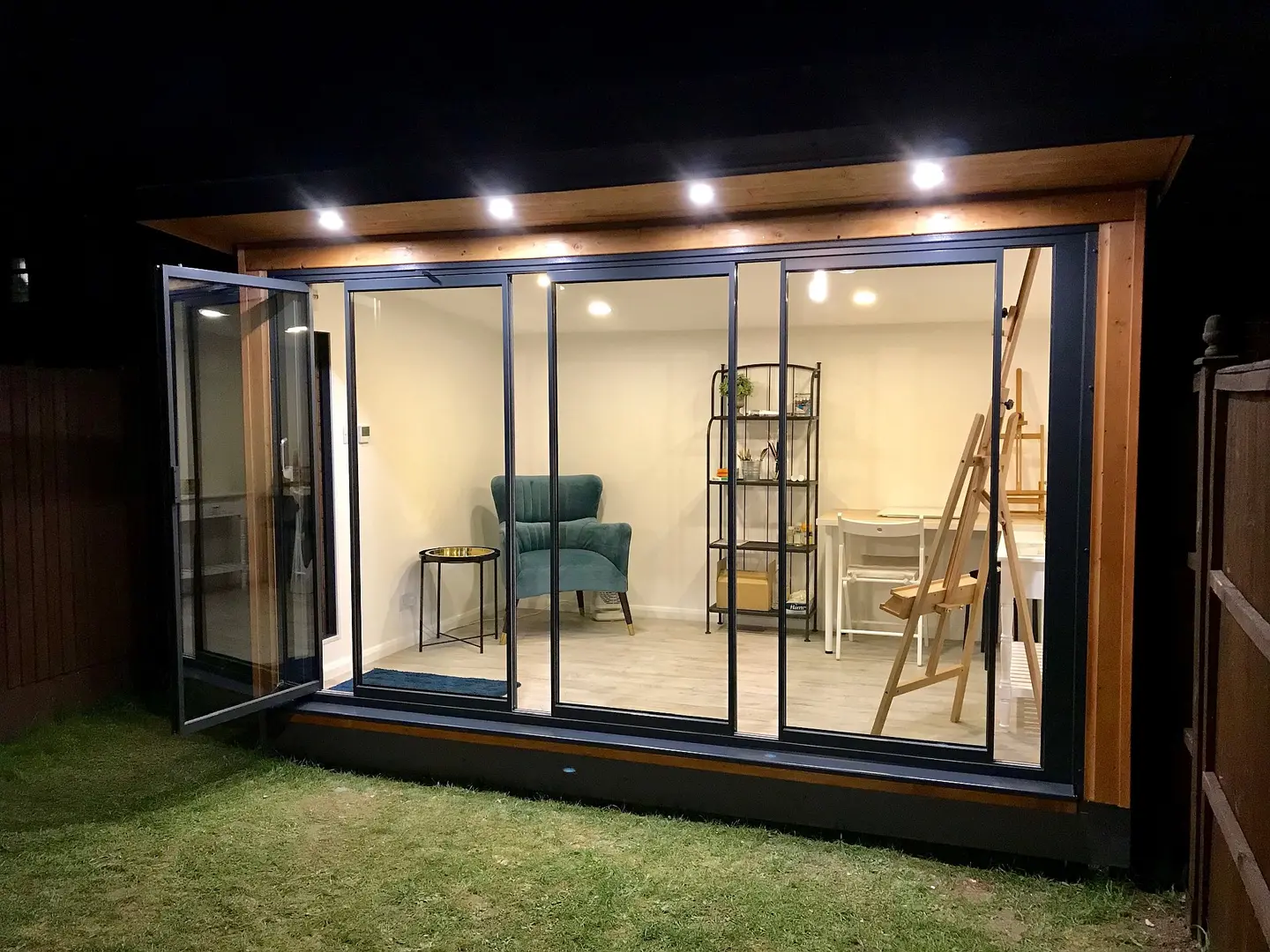
Studio and Workshop Spaces
Art studios and workshops need different door setups than offices. Garden room sliding doors in creative spaces often open wider to move large items like canvases or equipment. Natural north light through glass helps artists see colours accurately, while photographers might prefer controllable light levels.
Photography studios benefit from doors that open fully to create larger shooting areas. The ability to include outdoor spaces in shoots adds variety to possible backdrops. Door tracks need extra protection from art materials and wood dust in workshop settings, with robust seals and easy-clean tracks proving essential.
Ceramicists and sculptors often need wider door openings to move materials and finished pieces. The weight of equipment and materials means door threshold strength becomes particularly important. Some artists install additional sliding panels to create flexible backdrop options for different lighting conditions.
Multi-Purpose Garden Rooms
Rooms that serve multiple functions need adaptable door configurations. A space might work as a yoga studio in the morning, home office during the day, and family room in the evening. Garden room sliding doors with multiple panels offer different opening options to suit various activities.
Popular combinations include:
- Home gym + meditation space
- Office + hobby room
- Kids’ playroom + adult relaxation area
- Art studio + teaching space
- Music room + reading nook
Seasonal use changes often drive door choices in multi-purpose rooms. Summer might see doors fully opened for ventilation during exercise, while winter requires good insulation for focused work. The hardware needs to handle frequent operation as spaces change function throughout the day.
Specialist Garden Rooms
Gaming and media rooms need careful light control. Some sliding doors for garden rooms come with integrated blinds between glass panes, offering better light blocking than traditional curtains or blinds. Sound insulation becomes essential when rooms house music equipment or cinema systems.
Beauty salons and therapy rooms in garden buildings require a mix of privacy and natural light. Door placement affects the layout of treatment areas and waiting spaces. Clean, professional-looking entrances help create the right impression for clients visiting these business spaces.
Small business owners often choose outdoor spaces for their practices. Garden room sliding doors create welcoming entrances while maintaining security after hours. Good seals and thresholds keep outside noise from disturbing consultation sessions or treatments.
Adapting to Different Uses
Door configurations that worked well initially might need adjusting as room uses evolve. Adding frosted film to glass panels increases privacy without replacing entire door systems. Secondary locks or handles can improve convenience when room layouts change, while new blind systems help control light for different activities.
The flexibility of sliding systems allows spaces to grow with changing needs. Extra panels can extend opening widths, while new tracking systems can change how doors stack. Regular maintenance keeps operations smooth as usage patterns change, with proper cleaning and adjustment extending system life.
Technical Features of Garden Room Sliding Doors
Modern technology has improved how sliding doors perform in outdoor buildings. Double glazed patio doors now offer better insulation and security than ever before, while innovations in frame design have reduced maintenance needs. Garden room sliding doors combine these advances with robust construction suited to year-round use.
Security and Locking Systems
Multi-point locking systems secure doors at several points along the frame. Sliding doors often include anti-lift mechanisms that prevent panels from being forced up and out of their tracks. The quality of locks affects both insurance coverage and peace of mind, especially in garden rooms containing valuable equipment.
Security glass adds an extra layer of protection without changing appearance. Toughened and laminated options resist both accidental breakage and deliberate attack. Sliding doors for garden rooms benefit from internal beading, which prevents glass from being removed from outside.
Modern tracking systems include features that stop doors being forced open. Interlocking sections between panels create strong barriers when closed, while specially shaped frame sections prevent tampering. Anti-snap lock cylinders give protection against common burglary techniques, making garden spaces more secure.
Thermal Performance
The space between glass panes affects how well doors insulate. Wider gaps improve thermal performance but make units heavier and more expensive. Argon gas filling between panes cuts heat loss without affecting appearance, while special coatings reflect heat back into rooms during winter.
Frame design plays a big part in thermal efficiency. Garden room sliding doors with thermal breaks in their frames stop heat moving between inside and outside. The way frame sections fit together affects both heat loss and condensation resistance.
Better seals around door edges keep heat in and drafts out. Modern brush seals last longer than rubber types, while still allowing smooth operation. The way tracks drain water affects both thermal performance and longevity, with good systems preventing cold bridges through the threshold.
Opening Mechanisms
Running gear quality affects how doors feel to use. Higher quality rollers need less force to move heavy panels, while precision-made tracks guide doors more smoothly. Garden room sliding doors need robust mechanisms that work reliably in all weather conditions.
Door alignment systems keep panels running true. Self-levelling rollers adjust to minor ground movement, preventing doors from sticking or jamming. The way panels interlock when closing affects both security and weather protection.
Soft-close mechanisms prevent accidental damage. Like kitchen drawers, these systems catch moving panels and ease them to a stop. Motor systems can open and close doors automatically, useful for people with limited mobility or when hands are full.
Sliding Door Types for Garden Rooms
Different door systems suit different garden room layouts and uses. From basic two-panel designs to complex multi-panel arrangements, each type brings its own benefits. Garden room sliding doors come in various operating styles, with some offering full opening widths while others focus on space efficiency.
Standard Sliding Systems
Basic sliding systems move doors in straight lines along single tracks. Sliding doors for garden rooms often use this setup as it proves reliable and cost-effective. Two-panel systems work well for smaller openings, while three or four panels suit wider spaces.
Panel size affects both appearance and practicality. Wider panels mean fewer frame lines but need more force to move, while narrower panels slide more easily. The way panels overlap when open affects usable space – some stack in front of fixed panes while others slide past each other.
Track configuration determines how panels move. Single-track systems limit options but offer simpler operation, while multi-track setups allow more flexibility. Garden room sliding doors with multiple tracks let you choose which panels to open, useful when you need different levels of ventilation.
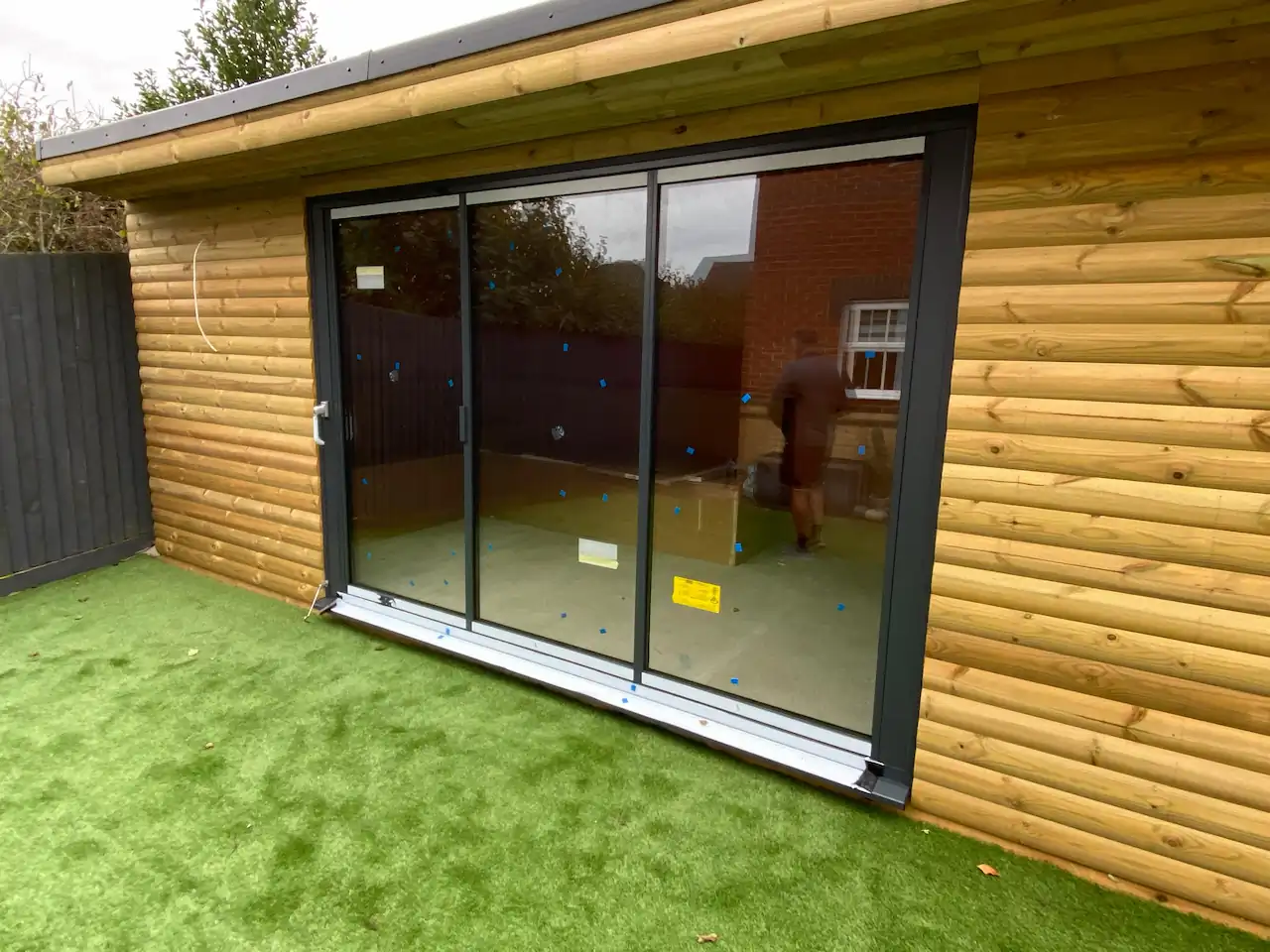
Slide and Turn Doors
These systems combine sliding and pivoting movements. Each panel slides along the track then turns sideways, storing nearly perpendicular to the opening. This creates wider access than standard sliding doors for garden rooms, as panels stack more compactly.
Panel movement needs careful planning during installation. The turning radius affects furniture placement near doors, while stack depth determines how much space panels need when open. Some systems let panels stack inside or outside the opening, adding layout flexibility.
The number of panels affects both cost and complexity. More panels allow wider openings but increase hardware needs and maintenance points. Track design becomes particularly important as panel numbers increase, ensuring smooth operation even with multiple turning points.
Corner Sliding Solutions
Corner systems remove supporting posts from room corners. Garden room sliding doors meeting at corners open up two walls at once, creating extra-wide access to outside spaces. Special track designs handle the forces at corners while maintaining easy operation.
Panel interlock design affects both security and weather protection at corners. Some systems use special corner posts that slide away with the doors, while others employ innovative interlocking sections. The way panels meet at corners influences both thermal performance and water resistance.
Structural requirements change when removing corner supports. Garden rooms need proper roof support to allow post-free corners, often using hidden steel beams. Track installation at corners needs extra precision to ensure proper panel alignment and operation.
Pocket Door Systems
Pocket systems hide open doors inside wall cavities. While requiring more complex construction, these setups keep opened doors completely out of sight. Garden room sliding doors using pocket systems free up wall space that would normally house stacked panels.
Cavity construction needs careful detailing. Wall thickness must accommodate door panels plus operating hardware, while proper sealing prevents drafts through the pocket. The way doors seal when closed affects both thermal performance and sound insulation.
Access for maintenance requires thought during design. Some systems include removable trim sections, while others need access panels in adjacent walls. Track design inside pockets particularly matters, as cleaning and adjustment become harder once doors are installed.
Garden Room Sliding Doors FAQ
How long do garden room sliding doors last?
Quality sliding doors typically last 20-30 years when properly maintained. Regular cleaning of tracks and rollers, along with annual servicing of locks and handles, helps achieve maximum lifespan. Regular maintenance can prevent most common issues before they develop into serious problems.
What's the difference between sliding and bifold doors for a garden room?
While garden room bifold doors fold into segments and stack to one side, sliding doors move in straight lines and overlap each other. The choice often comes down to opening width and how you plan to use the space.
What's the best frame colour for a modern garden room?
Anthracite sliding doors remain consistently popular for modern garden buildings, offering a sophisticated look that works well with most exterior finishes. Black frames create a bold, architectural statement but can appear imposing on smaller buildings. Lighter colours like white or cream suit traditional designs but need more frequent cleaning to maintain their appearance.
Do I need a flush threshold for my garden room doors?
A flush threshold creates step-free access between inside and outside spaces, particularly useful for moving furniture or equipment. While not always essential, level thresholds improve accessibility and reduce trip hazards. They require careful installation and proper drainage to prevent water ingress.
What's the best glass type for garden office doors?
Garden room sliding doors need at least double glazing with low-E coating for proper insulation. Self-cleaning glass helps maintain visibility with minimal maintenance, while toughened safety glass adds security and peace of mind. Solar control options reduce heat gain in summer, making them ideal for south-facing offices.
Modern glazing technology offers excellent thermal and acoustic properties without compromising on clarity. The right glass specification helps maintain comfortable working temperatures year-round while reducing energy costs.
How do I match door colours to my garden room design?
Choosing colours for garden room sliding doors involves balancing practicality with style. Dark frames hide dirt better but can make small spaces feel smaller, while lighter colours create an airy feel but show marks more easily. Frame colours should complement both your garden room’s external cladding and interior design scheme.
Are aluminium frames better than uPVC?
Garden room sliding doors made from aluminium offer better strength-to-weight ratios than uPVC, allowing for slimmer frames and larger glass areas. While initially more expensive, aluminium’s durability and low maintenance requirements often make it more cost-effective over time. Professional installation matters more than material choice for ensuring proper operation and longevity.
Can I have different colours inside and out?
Dual-colour frames let you choose different finishes for interior and exterior surfaces. This flexibility helps match external colours to your garden room’s cladding while coordinating internal colours with your decorating scheme. Many manufacturers offer this option without significant price increases.
Are garden room sliding doors energy efficient?
Garden room sliding doors with modern frames and double glazing provide excellent thermal performance. Current building regulations require specific U-values for new installations, ensuring good insulation levels. Quality systems include thermal breaks in frames and energy-efficient glass units, helping maintain stable temperatures while reducing heating costs.
The latest glass technology and improved frame designs have made sliding systems increasingly energy efficient. Multi-chamber frames and specialised glass coatings work together to maintain comfortable temperatures, while proper installation ensures optimal performance.
What's the best door configuration for offices?
Garden room sliding doors in office settings often work best with a three-panel configuration, where one panel remains fixed while two slide. This setup provides good ventilation options and easy access while maintaining sufficient fixed glazing for furniture placement. The middle panel should align with your desk position to reduce screen glare.
We’d Love to Help You
Vision Glass Doors is a designer, manufacturer, and installer of premium door systems. We are a family run business with over 20 years’ experience and 5,000 installations across the UK.
Our leading range of door systems include Ultra Slim – Slide and Turn Doors, Slimline Sliding Patio Doors and Frameless Glass Doors. Suitable for various internal and external applications, they are applicable to residential and commercial projects.
Click Quick Quote Online for a free quotation within 24 hours. Alternatively, call or email us on 01582 492730 or at info@visionglassdoors.co.uk.

